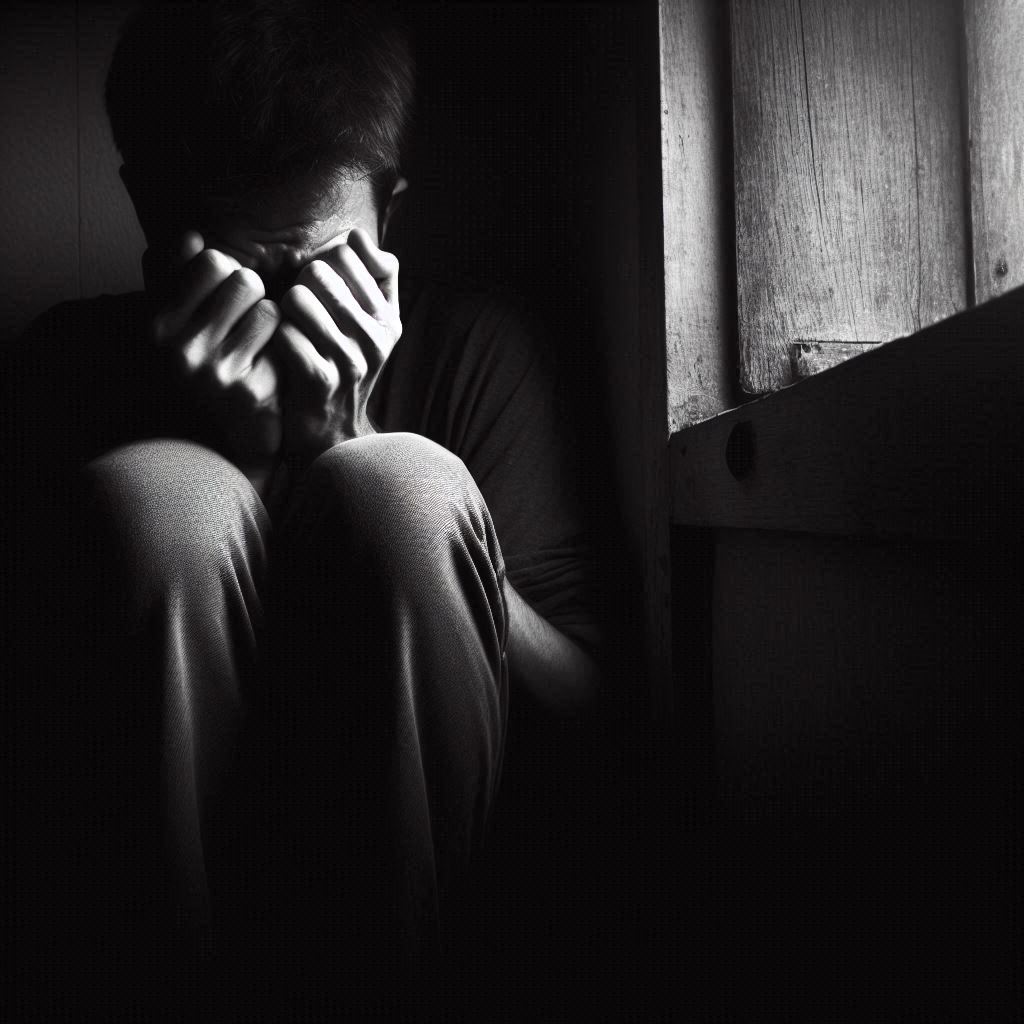Agoraphobic avoidance behavior is a complex issue that affects many people’s daily lives. Essentially, it’s the act of avoiding places or situations where escape might be difficult, or where help wouldn’t be available if anxiety escalates. This often means staying away from public spaces like shopping centers, public transport, or even wide-open areas.
In the following sections, we’ll explore the causes, symptoms, and treatments for agoraphobia, offering insights on managing and overcoming this debilitating condition.
Understanding Agoraphobic Avoidance
Agoraphobic avoidance behavior involves intentionally keeping away from places or situations due to exaggerated fears. These fears revolve around the idea of not being able to escape or find help if anxiety spikes. Let’s break down what this means, why it happens, and how it impacts lives.
Definition and Symptoms
Agoraphobic avoidance is more than just shyness or slight nervousness about unfamiliar settings. It is an intense fear that leads people to avoid:
- Public places such as shopping malls, stadiums, or parks.
- Public transportation including buses, trains, or airplanes.
- Situations requiring social interaction like parties or gatherings.
Common Symptoms:
- Panic attacks or severe anxiety in feared places
- Physical symptoms such as sweating, trembling, and a rapid heartbeat
- An overwhelming need to escape a situation
- Fear of being alone or leaving home
These behaviors limit daily experiences and create a constrained lifestyle.
Causes and Risk Factors
Understanding the root causes of agoraphobic avoidance can help in addressing and managing it effectively.
Causes:
- Genetic Factors: Family history of anxiety or agoraphobia
- Traumatic Events: Negative experiences like a previous panic attack in a public place
- Environmental Stressors: High-stress environments or life situations
Risk Factors:
- Having another anxiety disorder or phobia
- Experiencing significant life changes or stress
- Being overly shy or having a tendency to avoid conflicts or uncomfortable situations
The culmination of these elements can lead individuals down a path of increasing avoidance and fear.
Impact on Quality of Life
Agoraphobic avoidance doesn’t just stay within the realm of fear; it extends to the very fabric of daily living.
Social Aspects:
- Struggles with maintaining friendships and relationships
- Isolation due to avoiding social gatherings
Occupational Impacts:
- Difficulty commuting or attending work
- Job loss or limited career progression due to avoidance behaviors
Personal Life:
- Limited ability to run errands or enjoy hobbies
- Increased dependency on others for basic needs
The result is a drastically hampered quality of life, with many finding their worlds shrinking as the avoidance behavior grows stronger.
By recognizing and addressing these aspects, there’s potential for significant improvement and reclaiming a fulfilling life. Understanding agoraphobic avoidance is the first step towards making informed and compassionate interventions that can help those affected.
Latest Research on Agoraphobic Avoidance
In recent years, research has made impressive strides in understanding and treating agoraphobic avoidance behavior. Studies from 2022 to 2024 have provided new insights into innovative treatments, the role of technology, and real-life applications through case studies and clinical trials. Let’s explore these exciting developments.
Innovative Treatments and Therapies
The field of mental health is constantly evolving, with new therapies emerging to help those suffering from agoraphobia. Recent studies highlight several promising treatments:
- Adaptive Aftercare Strategies: Research emphasizes the importance of tailored aftercare programs. These strategies adapt to individual needs to provide ongoing support, reducing the risk of relapse.
- Running Therapy: A novel approach that matches the benefits of antidepressants, running therapy not only improves mental health but also provides significant physical benefits.
- The Oxford Cognitions and Defences Questionnaire (O-CDQ): This brief measure captures key beliefs in various disorders, helping in personalized therapy plans.
These treatments show that understanding individual differences and providing personalized care can make a huge impact on recovery.
Use of Technology in Treatment
Technology’s role in mental health care has grown substantially, offering new ways to treat agoraphobic avoidance. Digital and adaptive technological approaches have opened new doors:
- Virtual Reality (VR) Therapy: Automated VR therapy simulates real-world scenarios, allowing patients to confront and overcome their fears in a controlled environment. This method has shown significant reduction in agoraphobic distress.
- Digital Support Systems: Mobile apps and online resources provide immediate support and tracking. These tools help patients manage their anxiety from the comfort of their homes, offering instant accessibility.
By integrating technology, treatment becomes more accessible and effective, breaking down barriers to traditional healthcare.
Case Studies and Clinical Trials
Real-life applications through case studies and clinical trials offer tangible proof of progress in this field:
- GameChange Study: This multicentre, randomized control trial found that automated VR therapy significantly reduced avoidance behaviors in patients with psychosis, demonstrating the versatile applications of VR.
- Patients with Psychosis: Research on agoraphobic avoidance among patients with psychosis has unveiled new angles for treatment. Innovative strategies tailored to this group have started to show promise.
- Economic Value Assessment: Evaluations of the economic impact of VR therapy indicate that such treatments not only improve patient outcomes but also offer cost-effective solutions.
These studies highlight the practical benefits and real-world implications of the latest research, providing hope and concrete steps toward better mental health care.
The latest developments in agoraphobic avoidance research offer new, exciting possibilities for those affected by this challenging condition. By leveraging innovative treatments, technology, and thorough research, the future for treating agoraphobia looks brighter than ever.
Cognitive and Behavioral Approaches
Addressing agoraphobic avoidance behavior is essential for improving the quality of life of those affected. Cognitive and behavioral therapies play a significant role in overcoming these challenges. Let’s look at two main approaches: Cognitive Behavioral Therapy (CBT) and Exposure Therapy.
Cognitive Behavioral Therapy (CBT)
Cognitive Behavioral Therapy, or CBT, is a widely used method for treating agoraphobic avoidance behaviors. It focuses on changing the thought patterns that lead to fearful behaviors. But how does it work?
CBT helps patients understand how their thoughts influence their actions. For instance, someone might think that if they go to a crowded place, they will have a panic attack. CBT teaches them to challenge this thought and replace it with a more realistic one. Here’s how:
- Identifying Negative Thoughts: The first step involves recognizing the negative thoughts that fuel anxiety. For example, thinking “I can’t escape if I panic in a crowded place.”
- Challenging These Thoughts: Patients then learn to question the validity of these thoughts. Are they based on facts or irrational fears?
- Replacing with Positive Thoughts: The final step is to substitute the negative thoughts with more positive, realistic ones. Thinking “I can cope with my anxiety, and I am likely to be safe.”
During therapy sessions, individuals may engage in various activities such as role-playing and maintaining a thought journal. These activities help in consistently applying the new thought patterns in real-life scenarios.
By reshaping their thinking, individuals can reduce their anxiety and gradually start to face situations they once avoided.
Exposure Therapy
Exposure Therapy is another key method used to treat agoraphobic avoidance. It involves facing the feared situations head-on in a controlled and gradual manner. This might sound intimidating, but it’s a proven way to help people overcome their fears.
Here’s a typical process of Exposure Therapy:
- Create a Fear Hierarchy: Therapist and patient work together to list situations that cause anxiety, ranking them from least to most frightening.
- Gradual Exposure: Starting with the least scary scenario, the patient is gradually exposed to more challenging situations. This could mean first imagining the situation, then visiting the place with a trusted person, and finally going alone.
- Practice Relaxation Techniques: Techniques like deep breathing, visualization, or progressive muscle relaxation are practiced to manage anxiety during exposure.
- Building Confidence: With each exposure, the patient builds confidence in their ability to handle anxiety without avoidance.
The goal of Exposure Therapy is to desensitize the person to their fears, making the anxiety response less intense over time. By allowing them to experience the feared situation without catastrophic outcomes, it helps break the cycle of avoidance.
While both CBT and Exposure Therapy require commitment and effort, their effectiveness in treating agoraphobic avoidance behaviors is supported by extensive research and real-world success stories. By incorporating these approaches into treatment plans, many individuals find themselves reclaiming their lives from the grips of fear.
Self-Help Strategies for Managing Agoraphobic Avoidance
Living with agoraphobia can be challenging, but there are self-help strategies that can make a positive difference. These methods empower individuals to manage their anxiety and improve their quality of life. Here are some effective strategies you can try.
Relaxation Techniques
Managing anxiety begins with relaxation techniques. Practices like deep breathing, meditation, and progressive muscle relaxation help soothe your mind and body.
- Deep Breathing: Simple yet effective, deep breathing involves taking slow, deep breaths to calm your nervous system. Focus on inhaling through your nose and exhaling through your mouth. This can lower your heart rate and reduce anxiety.
- Meditation: Meditation helps clear your mind and reduce stress. Start with just 5-10 minutes a day, sitting quietly, and focusing on your breath. Apps and online videos can guide you through meditation practice.
- Progressive Muscle Relaxation: This technique involves tensing and then relaxing each muscle group in your body. Begin with your toes and work your way up to your head. It helps in releasing built-up tension and promotes relaxation.
Learning and practicing these techniques daily can help prevent anxiety from becoming overwhelming.
Gradual Exposure
Gradual exposure is about facing your fears step-by-step. Instead of diving into a situation that causes high anxiety, you start small and slowly build up your tolerance.
- Create a List: Write down situations that make you anxious, from least to most frightening.
- Start Small: Begin with the least scary situation. This might mean standing near the doorway instead of going outside.
- Increase Exposure: Gradually move to more challenging situations, like taking a walk around your block.
- Stay Consistent: Consistency is key. Regular exposure helps reduce the anxiety linked to those situations.
Gradual exposure teaches your brain that the feared scenarios are not as dangerous as they seem, rebuilding your confidence step by step.
Support Networks
Having a strong support network is crucial in managing agoraphobic avoidance. Friends, family, and support groups can provide both emotional and practical help.
- Friends and Family: Share your struggles with people close to you. They can offer encouragement, accompany you during challenging situations, and celebrate your progress, no matter how small.
- Support Groups: Joining a group with individuals facing similar challenges can be empowering. These groups, whether in person or online, offer a sense of community and shared experience.
- Professional Support: Don’t hesitate to seek help from a therapist or counselor. They can provide tailored strategies and ongoing support throughout your recovery journey.
Involving others in your path to overcoming agoraphobia fosters a sense of belonging and reduces feelings of isolation.
When to Seek Professional Help
Agoraphobic avoidance behavior can severely affect one’s daily life and can be challenging to manage alone. To ensure you or your loved one receives the proper support, it’s essential to recognize when professional help becomes necessary.
Signs Professional Help is Needed
If you’re wrestling with agoraphobia, here are some signs that might indicate it’s time to seek professional help:
- Intense Fear of Public Places: If the fear of being in places where help might not be available is overwhelming and consistent.
- Panic Attacks: Experiencing frequent panic attacks, especially in public or crowded areas.
- Avoidance Behavior: Avoiding situations that used to be routine, like going to the grocery store, school, or work.
- Dependency: Needing someone to accompany you anywhere outside your home.
- Decline in Daily Functioning: Not being able to perform daily tasks or take care of responsibilities.
- Social Withdrawal: Pulling away from friends and family, leading to isolation.
- Physical Symptoms: Persistent symptoms such as dizziness, sweating, rapid heartbeat, or nausea when thinking about going out.
Recognizing these signs early can prevent further deterioration in quality of life and make the path to recovery smoother.
Finding the Right Therapist
Finding a therapist who specializes in agoraphobia and avoidance behaviors can make a big difference in treatment effectiveness. Here’s how to find the right one:
- Research and Referrals: Start by asking friends, family, or your primary care doctor for recommendations. Online reviews and directories can also be helpful.
- Check Credentials: Make sure the therapist is licensed and has experience treating anxiety disorders and agoraphobia. A therapist with specific training in Cognitive Behavioral Therapy (CBT) can be particularly beneficial.
- Interview Potential Therapists: Don’t hesitate to ask questions about their experience, treatment approaches, and success stories.
- Consider Logistics: Look for a therapist who offers flexible options such as virtual sessions or in-home visits, especially if leaving the house is challenging.
- Comfort and Compatibility: The therapeutic relationship is crucial. Choose someone you feel comfortable with and who understands your needs and goals.
- Insurance and Costs: Check if the therapist accepts your insurance or offers a payment plan that fits your budget.
Taking these steps ensures that you find a therapist equipped to provide the support and guidance needed to overcome agoraphobic behaviors.
Approaching professional help early on increases the chances of successful management and sets the stage for reclaiming an active and fulfilling life. Keep these tips in mind as you seek the right support tailored to your unique situation.
Conclusion
Understanding and addressing agoraphobic avoidance behavior is vital for improving the quality of life for those affected. This behavior limits daily activities and contributes to social isolation and emotional distress. By recognizing the underlying causes and employing effective treatments like Cognitive Behavioral Therapy, Exposure Therapy, and innovative technological interventions, individuals can manage and overcome their fears. Early intervention and support systems play a crucial role in recovery. Prioritizing this issue not only helps the sufferers but also fosters a more inclusive and supportive community. Knowledge and proactive approaches open the door to a life free from the constraints of avoidance behaviors.








